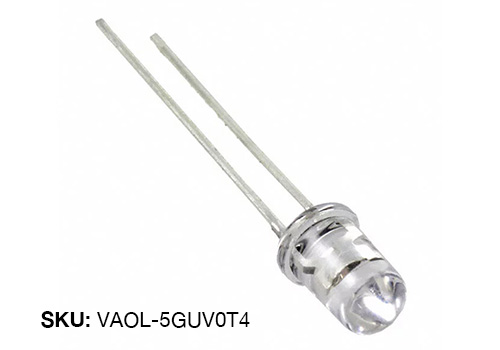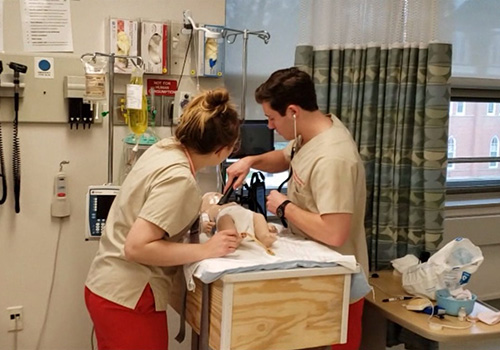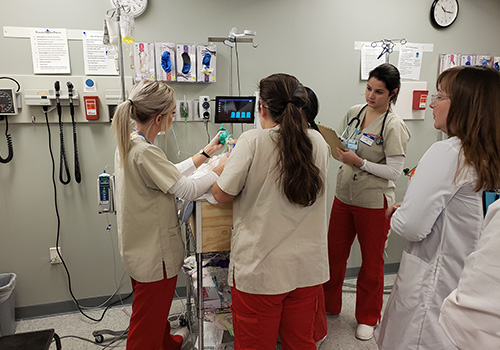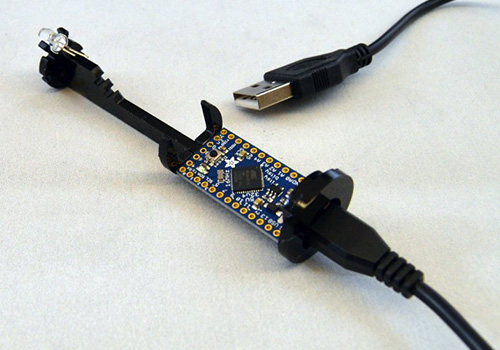Project
Application Characteristics
Training nursing students for real scenarios can help save lives, and high-tech manikins are a traditional approach for many healthcare education programs and healthcare simulations. However, costs often get in the way of accessibility.
A single high-tech manikin can cost $100,000, and full healthcare simulation centers may require more than $1 million to build, not including ongoing operating costs. Many nursing programs simply don’t have that kind of budget for nursing simulations, so the students — and their future patients — may suffer.
For Otterbein University’s Nursing Department Skills Laboratory team, developing an affordable solution that didn’t sacrifice simulation capabilities was crucial. In collaboration with tech startup, edgeThingZ, Otterbein designed a solution that moved the simulation technology from the smart “dummy” to simulated medical devices that can be used on lower tech manikins as well as with human actors.
Named the Healthcare Education Simulation Station, or HESS, the solution contains numerous simulated medical devices, including a pulse oximeter, thermometer, blood pressure monitor, capnometer, glucometer, fetal monitor and a Doppler ultrasound to simulate vital signs that are important in providing diagnosis and treatment. And it does it all at a cost that virtually any nurse educator can afford.
But before the HESS design was finalized, our clients had to find the right illuminated component. That’s where VCC came in.
Application Requirements
Some of the HESS devices use ultraviolet light to detect a marker at a specific point to simulate various vital signs on a static, low-fidelity manikin or on an actor posing as a patient.
Because key portions of the HESS system require sophisticated illumination and marker detection to operate, the LED solution had to meet the following requirements:
- Wide viewing angle for maximum visibility
- Fast, reliable brightness in seconds
- High-intensity illumination
- Operate at 385 NM wavelength
Solution / Approach
The collaboration between Otterbein’s team and edgeThingZ required a lot of trial and error when developing the prototype. The clients tested solutions that included LEDs from multiple manufacturers. After working with our design team, they landed on the ideal solution — and ultraviolet LED from our VAOL Series.
VAOL Series Ultraviolet LED
VCC’s standard 5mm ultraviolet LED was the ideal solution for the innovative new product. Here’s why:
- Ideal wavelength and intensity for successful operation of the device
- 30-degree viewing angle for enhanced visibility during simulations
- High-intensity output needed for communication between the marker and the simulated medical device


Results & Benefits
VCC’s in-stock indicator solution delivered:
- Maximum visibility for hands-on learning thanks to its 30-degree viewing angle
- Production efficiencies created by ordering a standard product
- Full brightness in seconds with high-intensity output
- Reliable indication with ultraviolet LEDs that communicate with the markers
- Greater control for instructors during simulations
- Improved student access to real-life scenarios for hands-on learning
- Enhanced learning through simulations on humans, which help nurses develop their bedside manner
Leveraging affordable component engineering, the Healthcare Education Simulation Station utilizes components like VCC’s high-intensity UV LED to dismantle the prohibitive capital barriers of traditional healthcare simulation centers. This innovative approach dramatically cuts costs for healthcare education programs, ensuring students receive critical, high-fidelity nursing simulation experiences, thus democratizing access to advanced healthcare education through scalable healthcare simulation technology.
Value-Added Services
Inventing new products doesn’t have to mean reinventing the wheel when it comes to status indication. VCC delivers standard products that outshine competitors when it comes to reliability and the features needed to meet your goals.
If you don’t see exactly what you need in stock, our experienced team can create a custom solution or revise a standard product to find the perfect fit.
Case Study Media









